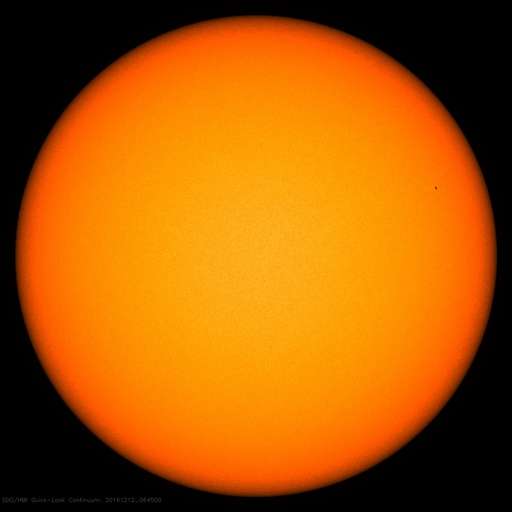Researchers report possible solution to a long-standing solar mystery

Astronomers from the University of Hawaii Institute for Astronomy (IfA), Brazil, and Stanford University may have solved a long-standing solar mystery.
Two decades ago, scientists discovered that the outer five percent of the sun spins more slowly than the rest of its interior. Now, in a new study, to be published in the journal Physical Review Letters, IfA Maui scientists Ian Cunnyngham, Jeff Kuhn, and Isabelle Scholl, together with Marcelo Emilio (Brazil) and Rock Bush (Stanford), describe the physical mechanism responsible for slowing the sun's outer layers.
Team leader Jeff Kuhn said "The sun won't stop spinning anytime soon, but we've discovered that the same solar radiation that heats the Earth is 'braking' the sun because of Einstein's Special Relativity, causing it to gradually slow down, starting from its surface."
The sun rotates on its axis at an average rate of about once per month but that rotation isn't like, for example, the solid Earth or a spinning disk because the rate varies with solar latitude and distance from the center of the sun.
The team used several years of data from the Helioseismic and Magnetic Imager on NASA's Solar Dynamics Observatory satellite to measure a sharp down-turn in the sun's rotation rate in its very outer 150km. Kuhn said, "This is a gentle torque that is slowing it down, but over the sun's 5 billion year lifetime it has had a very noticeable influence on its outer 35,000km." Their paper describes how this photon-braking effect should be at work in most stars.
This change in rotation at the sun's surface affects the large-scale solar magnetic field and researchers are now trying to understand how the solar magnetism that extends out into the corona and finally into the Earth's environment will be affected by this braking.
The research will appear in the January issue of Physical Review Letters.
More information: A Poynting-Robertson-like drag at the sun's surface. Physical Review Letters, arxiv.org/abs/1612.00873
Journal information: Physical Review Letters
Provided by University of Hawaii at Manoa





















